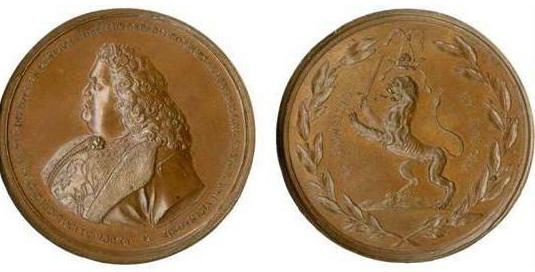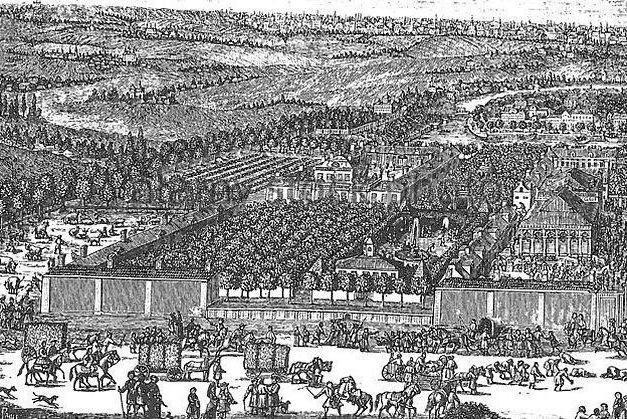Golovin Fedor Alekseevich (1650-1706) lived at the turn of two eras: the medieval and the new periods in the history of Russia. This man did not stand out in battles, and his talents were largely in the shadows. In this regard, there is less open information about Count Fedor Alekseevich Golovin than about other contemporaries of Peter the Great. Nevertheless, this figure played far from the last role in the Russian state.
Golovin Fedor Alekseevich: a brief biography
Not much information has been preserved about the childhood and youth of the leader. Golovin was born in 1650. He received primary education in his father’s house. From an early age, Fedor showed curiosity, was very susceptible to knowledge, which he successfully improved throughout his life. His written Russian speech was impeccable. In childhood, he was taught Latin. His teacher was a translator Andrei Belobotsky. At an older age, Fedor Alekseevich Golovin freely read classics and corresponded in Latin. Subsequently, he independently learned English and Mongolian. In 1681, as a solicitor, Golovin was in Astrakhan with his father. Subsequently, he was assigned the rank of steward.
First diplomatic mission
In the middle of the XVII century, the active development of the Amur lands - Dauria began. The tribes living there paid an annual yasak in the amount of 7-9 thousand rubles. The Russian government, in turn, actively contributed to the colonization of the Amur Region to form the food base of Eastern Siberia here. In 1654, the Albazinsky prison was built here . Several times he was attacked. The latter took place in 1686. The onslaught of the enemy was held by 826 people for 10 months. As a result, 70 of them remained alive. The Russian government was not able at that time to provide effective support to the population in Dauria. In 1685, Emperor Kan-si turned to Peter with the question of delimiting the borders. The Russian government took advantage of this and sent a diplomatic mission to conclude a peace treaty. December 25, 1685 Golovin Fedor Alekseevich was appointed plenipotentiary ambassador to China. The journey to Dauria took 21 months with stops. Arriving in Tobolsk, Golovin gathered a regiment of Cossacks of 1400 people. Among them were arable peasants, criminal and political exiles. Meanwhile, the situation in the Baikal region was heating up. In January 1688, the Mongol khan demanded the transfer of yasak people into citizenship and besieged Udinsk and Selenginsk. In September, a detachment of Golovin drove off the invaders, defeated at the river. Khilok army of taishas, eliminating the threat of Transbaikalia. After that, the mission went to Nerchinsk. Negotiations took place in this city. On August 12, the Russian and Chinese ambassadors met for the first time.

Nerchinsk treatise
On August 27, the third meeting of the ambassadors took place. At the meeting, the text of the agreement was read in three languages: Manchu, Latin and Russian. The articles of the agreement established the boundaries between states along the river. Gorbitsa, Kamennye Gory (Sianovy ridge) and the Sea of Okhotsk. Russia, for its part, pledged to destroy the fortifications of the Albazin Voivodeship and withdraw its subjects. With military superiority, the Chinese government was able to suspend for some time the Russian colonization of the Far East. Along with this, Fedor Alekseevich Golovin defended the empire’s right to the territory of Transbaikalia and the Sea of Okhotsk. The exact boundary between the states was established only in the middle reaches of the Amur. Russia was the first European country to agree on free trade relations with China. Russian diplomats insisted on including the corresponding article in the treatise. The long-term peace established by the treaty was of particular political importance to Russia. Some of his articles were valid until the ratification of the Aigun Agreement of 1858.
Interesting Facts
Fedor Alekseevich Golovin personally monitored the strengthening of Nerchinsk. In addition, under his leadership, a wooden fortress was built in Udinsk. Fur tax payments from Onkot, brotherly, Tunguz, and Tabunut tribes were also restored. Under the leadership of Golovin, the attacks of the Mongol robber detachments in the territory controlled by Russia were repelled. In 1689, he sent an expedition to the upper reaches of the river. Argun. Silver ore was discovered here .
Azov campaign
Scientific journals are still debating about the diplomat’s participation in the battles. Meanwhile, he played a prominent role in the procurement of ammunition and provisions for the Russian army, as well as in ensuring a positive opinion of the courts of Europe on Russia's intentions in the 2nd Azov campaign. On May 1696, a squadron commanded by Admiral Fedor Golovin advanced from Voronezh. A meeting was held at the Princesipum gallery. On it, it was decided to attack 2 ships standing on the roads below Azov. However, after reconnaissance, it turned out that there were 24 small vessels and 13 Turkish galleys. They decided to postpone the operation. On May 20, Cossacks of the Minyaev detachment attacked the Turkish fleet on the roadstead. Some of the ships were burned, some were scattered. On July 19, the Azov garrison capitulated.
The Great Embassy
After Princess Sophia was tonsured a nun, and V.V. Golitsyn was exiled, the Ambassadorial order and the government formally began to be headed by L.K. Naryshkin, the uncle of the tsar. However, being a drunkard and a sybarite, he devoted little time to business. Everything instead of him was actually ruled by E.I. Ukraintsev, the Duma clerk. It was he who in early December 1696 announced the Decree of the Emperor on the equipment of the mission to European countries. Its goal was to consolidate forces in the fight against Turkish aggression. In addition, Peter counted on financial and military-technical support of Christian states. The preparation and organization of the mission lay entirely on Golovin. March 10, 1697, diplomats left the village. Nikolsky. On May 18, the mission arrived in Koenigsberg, on August 16 - in Amsterdam, on June 16 - in Vienna. Everywhere Russian ambassadors were given a magnificent reception. Diplomats, and in particular Count Fedor Alekseevich Golovin, received many gifts and souvenirs. However, the mission’s goal was never achieved. As soon as it came to direct negotiations, the kings and kings of European states were limited to verbal promises not backed by any written agreements. Nevertheless, the activities of the ambassadors helped overcome the political isolation of the Russian Empire, as well as its inclusion in global trade in Europe. In addition, Fedor Alekseevich Golovin personally observed and supervised the recruitment of about 800 engineers, doctors, and officers into the Russian service. With his participation, tens of thousands of guns with bayonets were purchased, which were not in Russia. For Golovin, this mission became a kind of school of European diplomacy. In Vienna, he received a blessing from the monarch and many gifts. Golovin after Menshikov became the second subject of Russia, elevated to the count title of the Holy Roman Empire.

Administrative activities
After the return of the Great Mission, Golovin began to rule over Novgorod, Little Russia, Ustyuzh, Smolensky, Yamsky orders, the Mint, the Galician quarter, the Chamber of silver and gold affairs, as well as the Armory. This exaltation testifies not only to Peter's unlimited trust, but also to personal talents, exclusive responsibility and the diplomat’s working capacity. Nevertheless, Golovin continued to pay great attention to the material and technical support of the army. February 19, 1699 he becomes the head of the Ambassadorial order. A year earlier, on December 11, 1698, he headed the Naval Division. It should be noted that Golovin had neither the proper knowledge nor experience in naval affairs. In this regard, he did not intervene in direct marine activities. His tasks included recruiting personnel for the navy and army, controlling the production and procurement of weapons, transportation, etc.
War with sweden
Preparations for the battles were very active in Russia, but were hindered by a number of economic problems. Before the direct speech of the Russian troops, colossal diplomatic work was carried out. It should be noted that foreign countries did not show a desire to support Russia. Nevertheless, embassies of the empire appeared in Austria, Turkey, Holland, and Poland. So the corps of diplomats began to form, in their skills and knowledge no different from Western ones. The efforts of the leaders allowed to reduce the activity of Charles XII, which made it possible for Peter to restore the army after the defeat near Narva. The war substantially depleted the state. In 1699, a draft stamp paper was sent to Golovin. As the head of the Mint, he oversaw the re-minting of Yefimks into Russian coins. Due to the decrease in the share of silver, financial stability was achieved for a short time.
Last years
The rhythm of Golovin's life was very intense. In the spring of 1706, Peter was in Ukraine, awaiting the invasion of the Swedes. From there, he demanded to Golovin. In May, he wrote to Sheremetyev that he was heading to Kiev. However, some urgent cases delayed him. Only by the end of June was he able to leave Moscow. In Nizhyn, he suddenly fell ill and already died on July 30 in Glukhov. On the occasion of his death in the Navy, a funeral ceremony was held. The funeral took place only on February 22, 1707, a few months after the death. Engraving was made by personal order of Peter. It shows that the funeral was very magnificent.